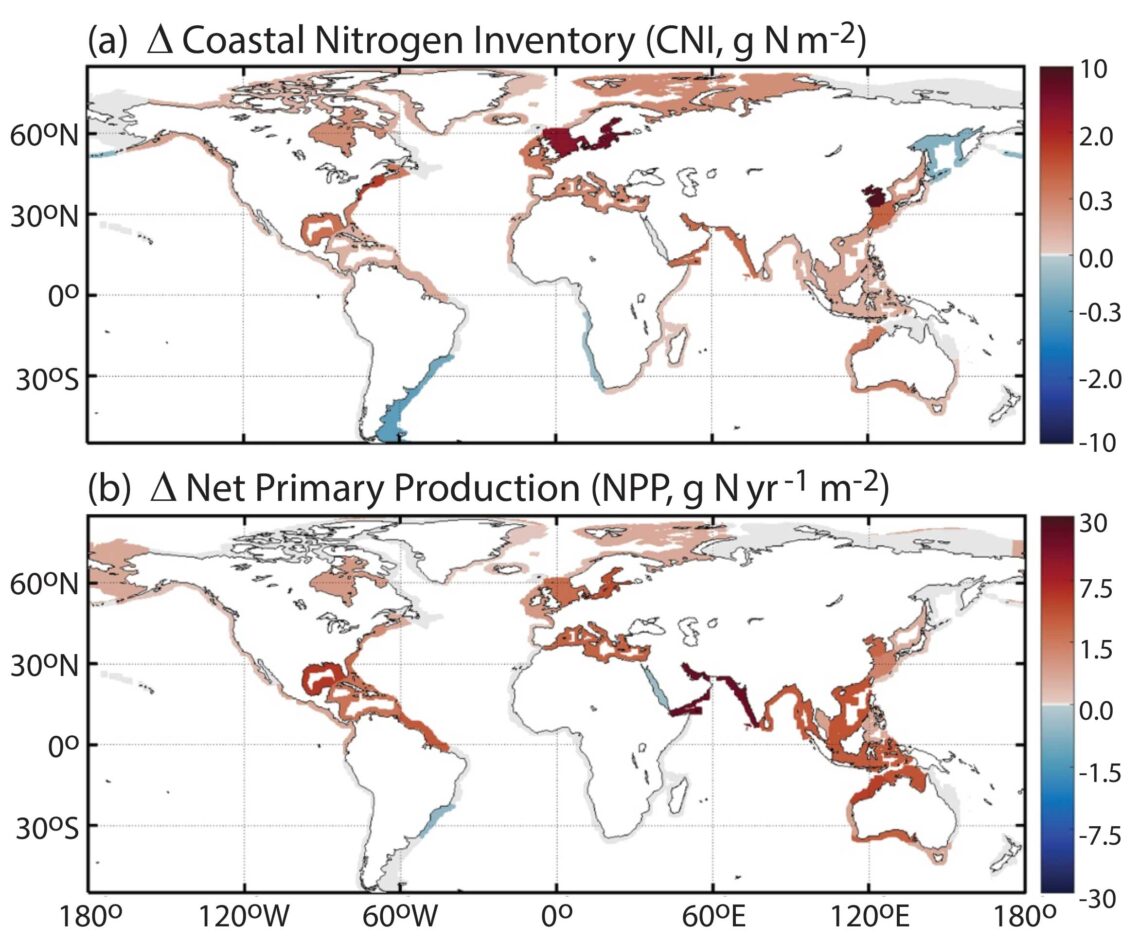March 16th, 2022
Key Findings
- This study investigated coastal ecosystem responses to increasing river nitrogen loads for the period between 1959 and 2010.
- Simulations revealed a ubiquitous global response, yet the sensitivity of each coastal ecosystem to increasing river nitrogen loads varied considerably.
- Elevated river nitrogen loads resulted in a 5.5% increase in the global coastal nitrogen inventory and commensurate increases in productivity and organic material supplied to the benthos.
- The response in coastal ecosystems with long residence times and high levels of nitrogen limitation, however, could be 2-5 times the global mean response.
Xiao Liu, Charles Stock, John Dunne, Minjin Lee, Elena Shevliakova, Sergey Malyshev, and P.C.D. Milly. Geophysical Research Letters. DOI: 10.1029/2021GL094367
Coastal oceans host diverse ecosystems and serve as important habitats for marine fish species. Over the past century, anthropogenic activities have resulted in substantial climatic and land use changes that stress coastal environments, often leading to eutrophication, harmful algal blooms, and deoxygenation. Rivers are a primary source of eutrophication, supplying an increasing amount of anthropogenic nitrogen to the coastal ocean over the past century.
This study investigated coastal ecosystem responses to increasing river nitrogen loads for the period between 1959 and 2010. Simulations revealed a ubiquitous global response, yet the sensitivity of each coastal ecosystem to increasing river nitrogen loads varied considerably. Elevated river nitrogen loads resulted in a 5.5% increase in the global coastal nitrogen inventory and commensurate increases in productivity and organic material supplied to the benthos. The response in coastal ecosystems with long residence times and high levels of nitrogen limitation, however, could be 2-5 times the global mean response. The findings of this study have important policy implications for the development of eutrophication mitigation strategies.
The scale of coastal environments and the complex underlying processes challenge observation-based analyses in even the most well-monitored systems. Global syntheses are hindered by coarse resolutions of current-generation global models necessitated by computational limitations. The ocean physical model for this study was configured from an enhanced-resolution version of GFDL’s Modular Ocean Model (MOM6) and its accompanying Sea Ice Simulator (SIS2), integrated with GFDL’s Carbon, Ocean Biogeochemistry and Lower Trophics (COBALT) marine biogeochemical model. COBALT simulates global-scale dynamics of carbon, nitrogen, phosphorus, iron, and oxygen, along with some phytoplankton zooplankton groups. The dynamic river freshwater and nitrogen fluxes are simulated by GFDL’s land-watershed model LM3-TAN, which incorporates global river routing and lakes into a terrestrial ecosystem to simulate nitrogen storage and cycling processes.



